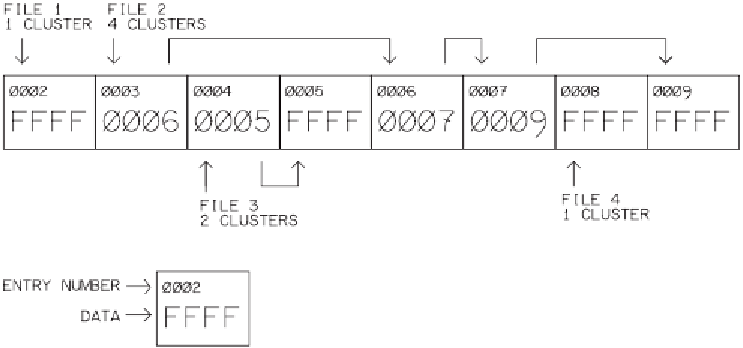Information Technology Reference
In-Depth Information
Figure 8-2: The FAT keeps a record of the clusters used by a file. FAT16 entries
are 2 bytes.
ter-chain (EOC) markers, indicate that the cluster is the last cluster used by
a file or directory. For example, if the file's only cluster is 0008h, entry
0008h in the FAT contains an EOC marker.
If a file requires two clusters, the FAT entry for the file's first cluster contains
the number of the file's next cluster and the entry for the second cluster con-
tains an EOC marker. For example, if a file uses clusters 0004h and 0005h
in sequence, entry 0004h contains 0005h, and entry 0005h contains an
EOC marker.
In a similar way, if a file requires more than two clusters, the FAT entry for
each cluster except the last contains the number of the file's next cluster, and
the entry for the last cluster contains an EOC marker. For example, if a file
uses clusters 0003h, 0006h, 0007h, and 0009h in sequence, entry 0003h
contains 0006h, entry 0006h contains 0007h, entry 0007h contains 0009h,
and entry 0009h contains an EOC marker. A file whose clusters aren't con-
tiguous is called a fragmented file.
A FAT32 table works the same way except the entries are 32 bits with the
highest four bits ignored.
Using the FAT is essential for large files, but an embedded system that
doesn't need large files could choose to support files that fit in single clusters
only.

Search WWH ::

Custom Search